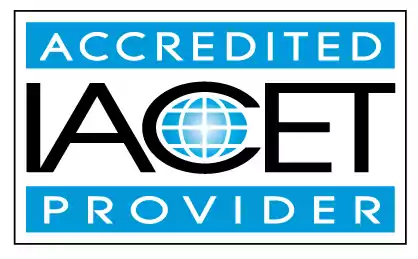Describe the components of emergency preparedness in the child care setting.
Learn about emergency preparedness in the child care setting, including the components and legal requirements. Understand what qualifies as an emergency and how child care professionals should be prepared. Explore this vital topic in early childhood education and child care centers.Trainings incorporating this outcome
CDA Subject Areas
Proficiency Level
Target Audience
Topic Areas
States
Alabama (7) Alaska (7) Alberta (7) Arizona (7) Arkansas (6) Australia (7) British Columbia (1) California (7) Colorado (7) Connecticut (7) Delaware (7) District of Columbia (7) Florida (7) Georgia (6) Hawaii (7) Idaho (7) Illinois (3) Indiana (7) Iowa (7) Jamaica (3) Kansas (7) Kentucky (4) Louisiana (7) Maine (7) Manitoba (3) Maryland (4) Massachusetts (7) Michigan (7) Minnesota (6) Mississippi (7) Missouri (3) Montana (7) Nebraska (7) Nevada (5) New Hampshire (7) New Jersey (4) New Mexico (7) New York (5) Newfoundland and Labrador (7) North Carolina (5) North Dakota (7) Nova Scotia (6) Ohio (7) Oklahoma (7) Ontario (3) Oregon (7) Pennsylvania (5) Prince Edward Island (6) Puerto Rico (4) Quebec (6) Rhode Island (7) Saskatchewan (7) South Carolina (4) South Dakota (7) Tennessee (2) Texas (11) Thailand (3) United Kingdom (4) Utah (7) Vermont (7) Virgin Islands (7) Virginia (7) Washington (7) West Virginia (7) Wisconsin (7) Wyoming (6)
120 hours courses
30 hours courses
24 hours courses
15 hours courses
10 hours courses
6 hours courses
2 hours courses
 0.2 CEUs
0.2 CEUs online
4.6/5
Related Outcomes
- Identify and understand the requirements of Child Care Subsidy (POC), Child and Adult Food Program, MSDE Child Care Credential, Tiered Reimbursement, and the Child Care Career and Professional Development Fund
- Describe the components of an emergency preparedness plan for child care facilities
- Define what is an emergency and the legal requirements for emergency preparedness for child care professionals.
- Demonstrate an understanding of optimal room arrangements for family child care settings and their components.
- Identify responses to typical daily child care scenarios with solutions that are aligned with Child Care Regulations
- Identify the components of a lesson plan for the family child care setting
- Demonstrate understanding of optimal room arrangements for family child care settings and their components.
- Demonstrate understanding of inclusionary practices for autism spectrum disorder in the child care setting.
- Identify the signs of illness in children and describe when a child should be excluded from care
- Demonstrate understanding of inclusionary practices for cerebral palsy in the child care setting.
- Identify strategies for the child care provider that will promote successful child development. Identify strategies for working with children with special needs
- Identify strategies and practices for preventing shaken baby syndrome and abusive head trauma in the child care setting
- Identify the different types of portfolios used in child care programs, and the appropriate portfolio components for each type.
- Describe ways child care professionals can support advocacy issues.
- Demonstrate how to develop strategies for involving parents in the child care setting
- Identify appropriate practice for the identification, prevention, and treatment of communicable diseases and illnesses in child care setting
- Describe the importance of monitoring the family child care environment for potential risks.
- Demonstrate understanding of inclusionary practices for anxiety in the child care setting.
- Identify appropriate practices communicable diseases/illnesses and immunizations and their schedules in child care setting
- Describe a staff orientation in accordance with Child Care Regulations
Related Articles
- Child care education
- Emergency Preparedness in Childcare: Creating and Practicing Safety Protocols
- Every Childcare Provider Must Be Trained in Basic Health & Safety
- Turn Your Home into a Thriving Family Childcare Business!
- Emergency Preparedness Training Every Childcare Provider MUST Know
- Why Every Childcare Worker Needs This CPR & First Aid Training
- Basic Health and Safety Training: The Essential Guide for New Child Care
- What Parents and Educators Need to Know About Child Safety
- Basic Health and Safety: The Must-Know Training for Childcare Professionals
- Basic Health and Safety in Childcare: A Complete Guide for Providers
- Emergency Preparedness Training for Childcare Providers: Keeping Kids Safe in a Crisis
- The Ultimate Guide to Medication Administration Training for Child Care Providers
- Medical Administration Training for Child Care: Where to Get It.
- Stay Ready: First Aid and Emergency Procedures in Early Childhood Education
- MSDE Basic Health and Safety: What Maryland Childcare Providers Need to Know
- From Meds to Milestones: Why Medical Administration Training Is Crucial in Child Care Settings
- A Beginner’s Guide to Medical Administration Training in Child Care
- From Band-Aids to EpiPens: Medical Administration Training in ECE
- Critical Skills for Childcare Professionals: Health, Safety, and Emergency Preparedness Training
- Emergency Preparedness in Child Care: What Every Provider Should Know